Mixing and matching different wood tones in one space is tricky and something I’ve always found challenging. Unless you’ve deliberately chosen to stick to one wood type, the same stain hue, and finish for your flooring, dining furniture, and home accessories, you’ll inevitably encounter a spectrum of wood colors in your house. Here are a few tips and tricks to keep your home design cohesive!
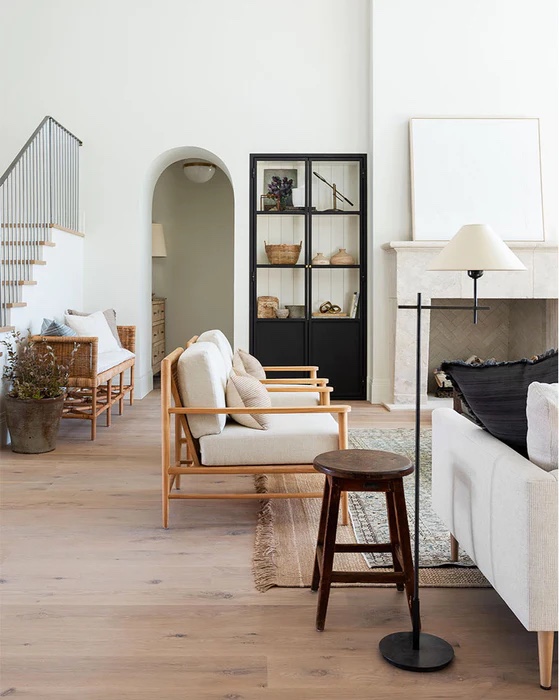
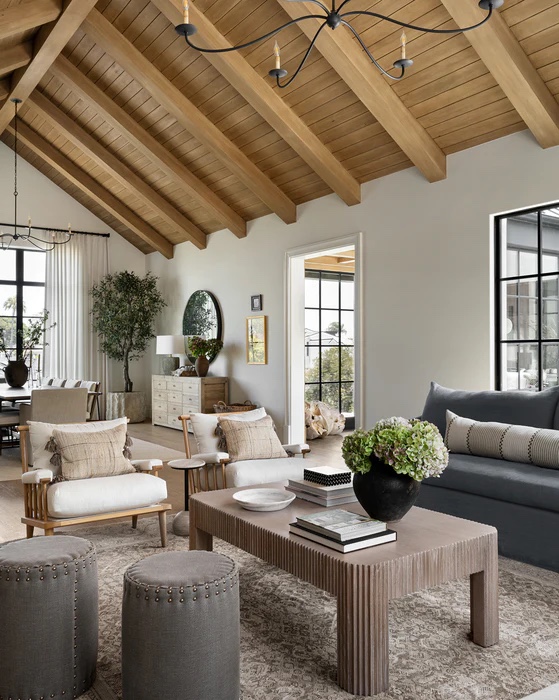
1. Choose 1 Main Wood Tone
It’s almost certain that your home will feature a variety of wood colors or tones. However, there’s usually one tone that takes center stage. It could be the hue of your wooden flooring or the shade of your kitchen cabinets. Regardless, select one tone as an anchor, the consistent color threading through your space.
2. Figure Out the Undertone
Next up, you’ll need to determine the undertone of your primary wood color. It will typically be either warm or cool. Warm wood tones often exude a more red, orange, or yellowish hue, while cool undertones veer towards a subtle gray. Regardless of the undertone, any additional wood colors or types you introduce into your space should share this same undertone.
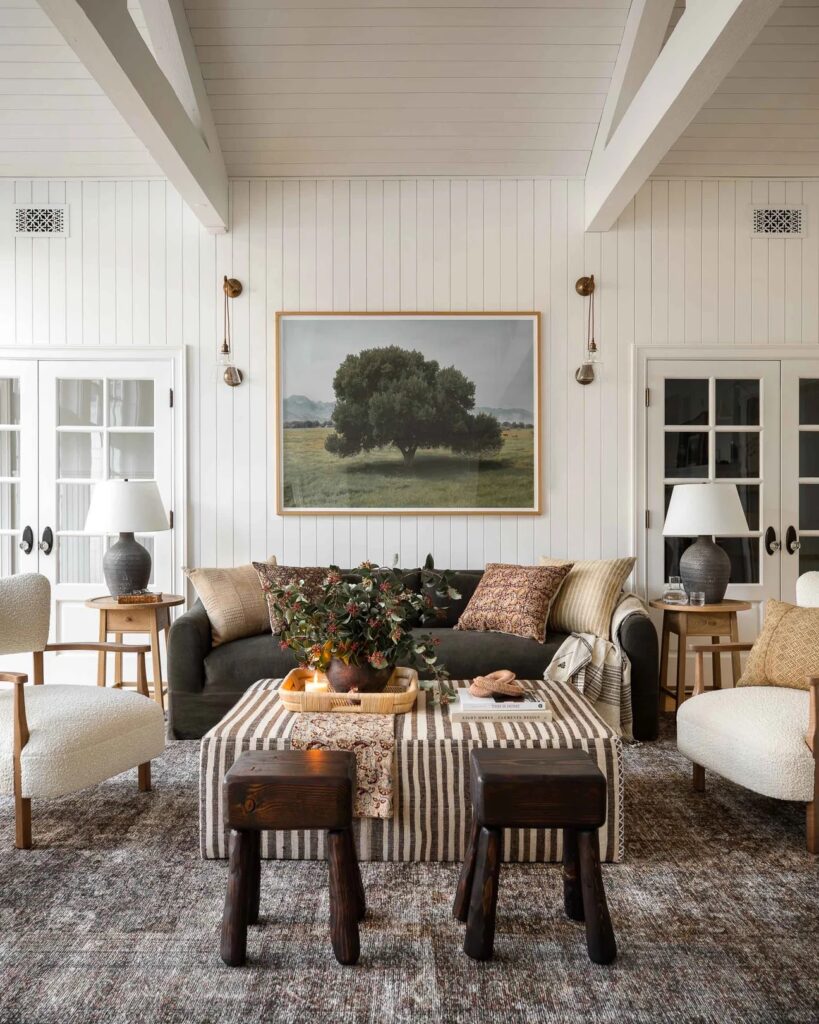
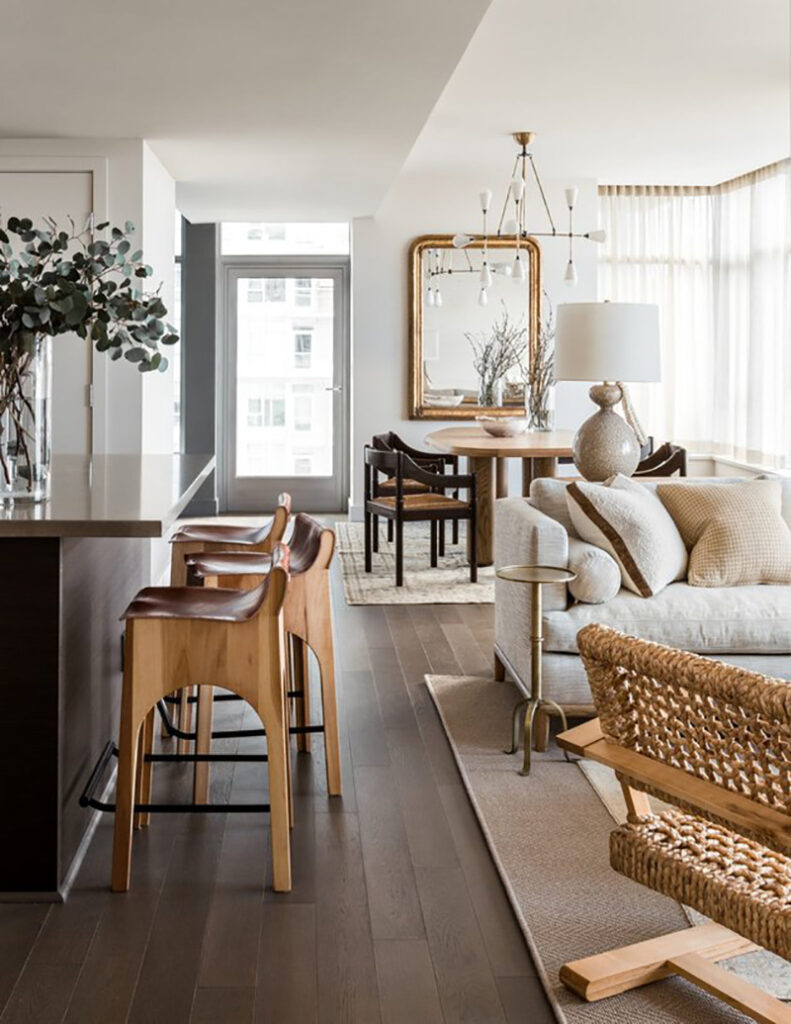
3. Stick to 2-3 Wood Tones
You must limit yourself to using 2 to 3 different wood tones max. Any more will create an unorganized and disjointed appearance.
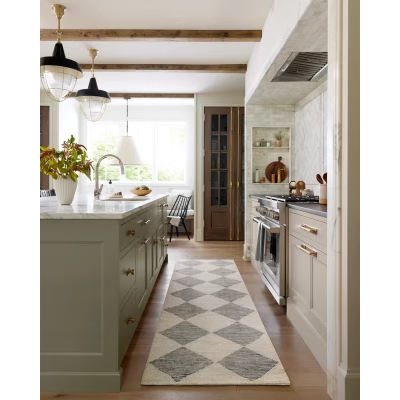
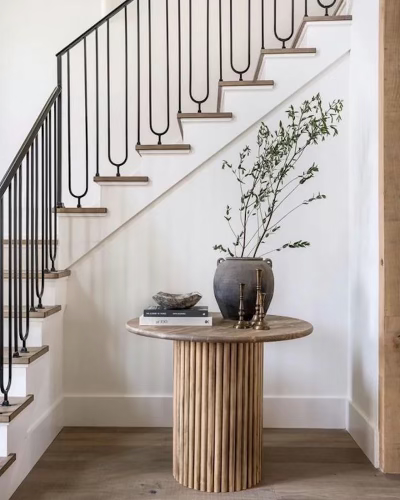
4. Shoot for Contrast
Two tones that are close in color but not quite identical can easily conflict with each other. For example, wood kitchen cabinets and wood floors can create a challenge when finding the right match. Instead of attempting to align the color of your wood floors with your cabinets, consider opting for a contrasting combo, like white oak cabinets paired with dark oak or pine wood floors.

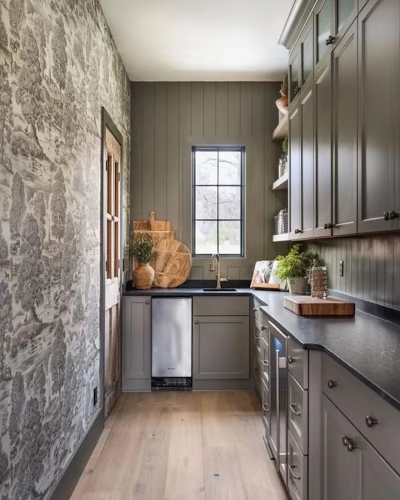
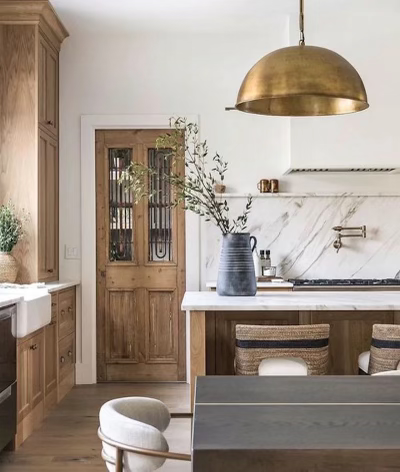
5. Use Each Wood Tone More Than Once!
To create a natural and cohesive flow through your home, use each wood tone more than once in each space. If you use dark wood, incorporate it in the trim, the cabinets, and on a side table. Having one distinct wood tone on one element in a room will make it stick out.
Below, on the photo on the left, note the beams, fireplace mantle, and flooring. On the photo on the left, note the door trim, the flooring, and the side table.
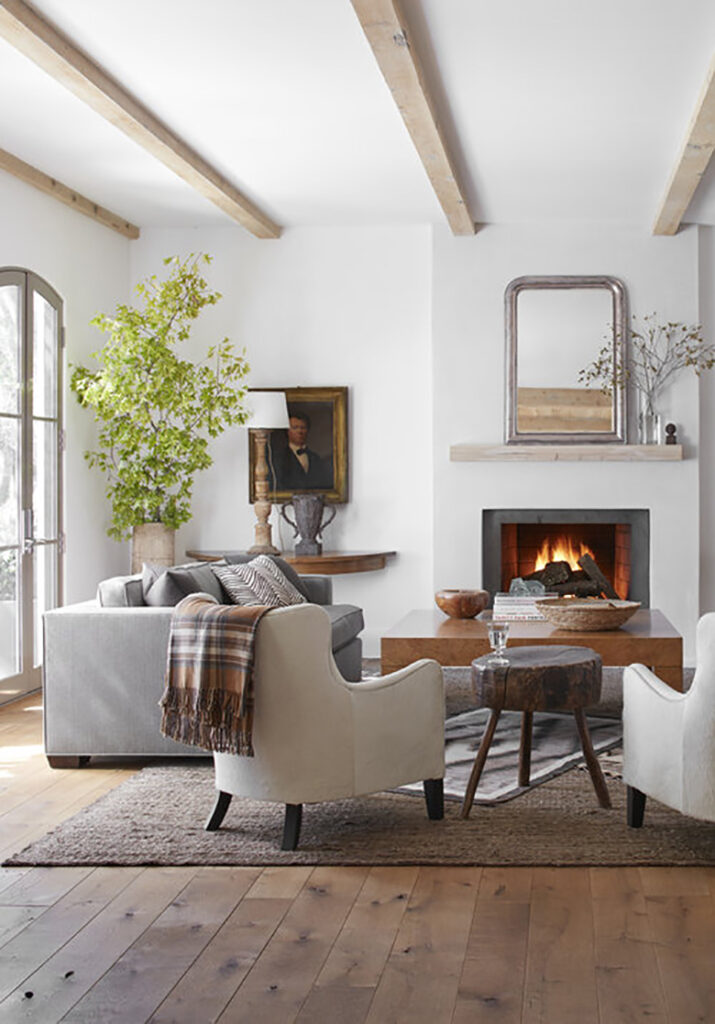
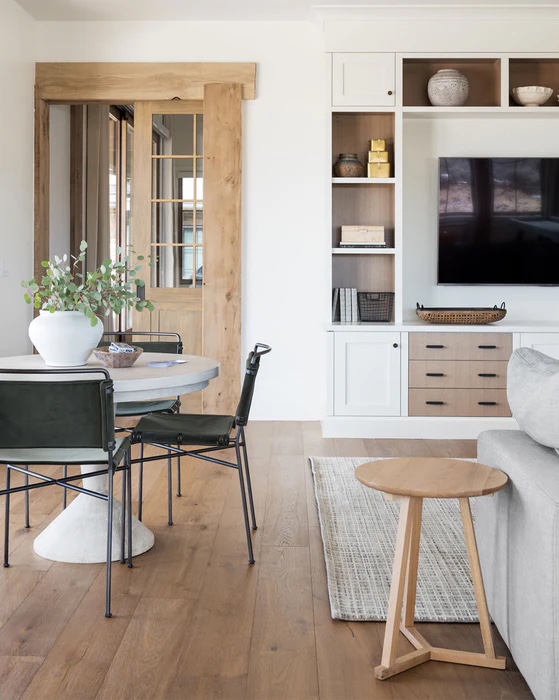
6. Match the Floors to the Ceiling Beams
A useful guiding principle is to match your wooden floors with your ceiling beams. Pairing light wood floors with dark beams can create an imbalance, making the room feel top-heavy. Frame your space with the same wood tone on the ceiling and floor.
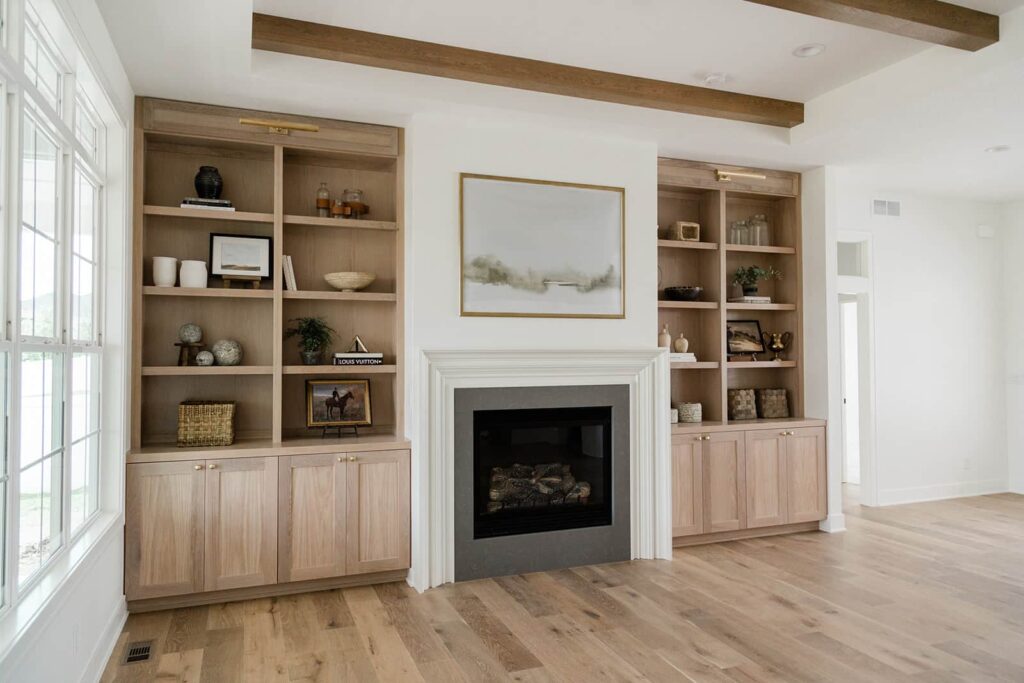
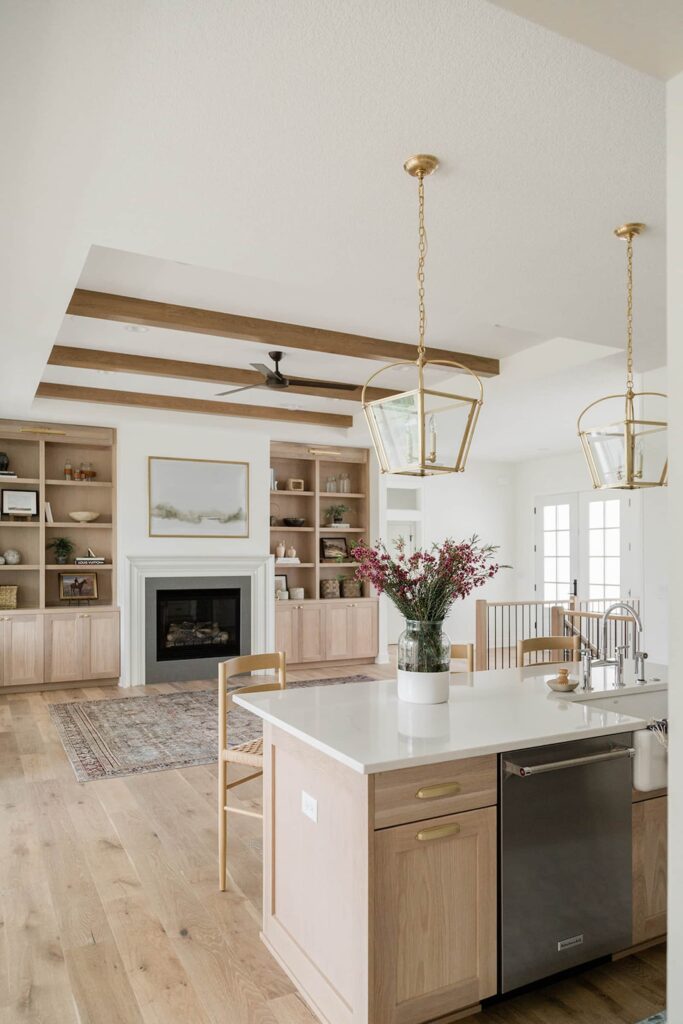
7. Use Furniture and Area Rugs
An area rug can be a great intermediary to break up different wood tones. It’s essentially a barrier between the wooden legs of furniture and the wood flooring.
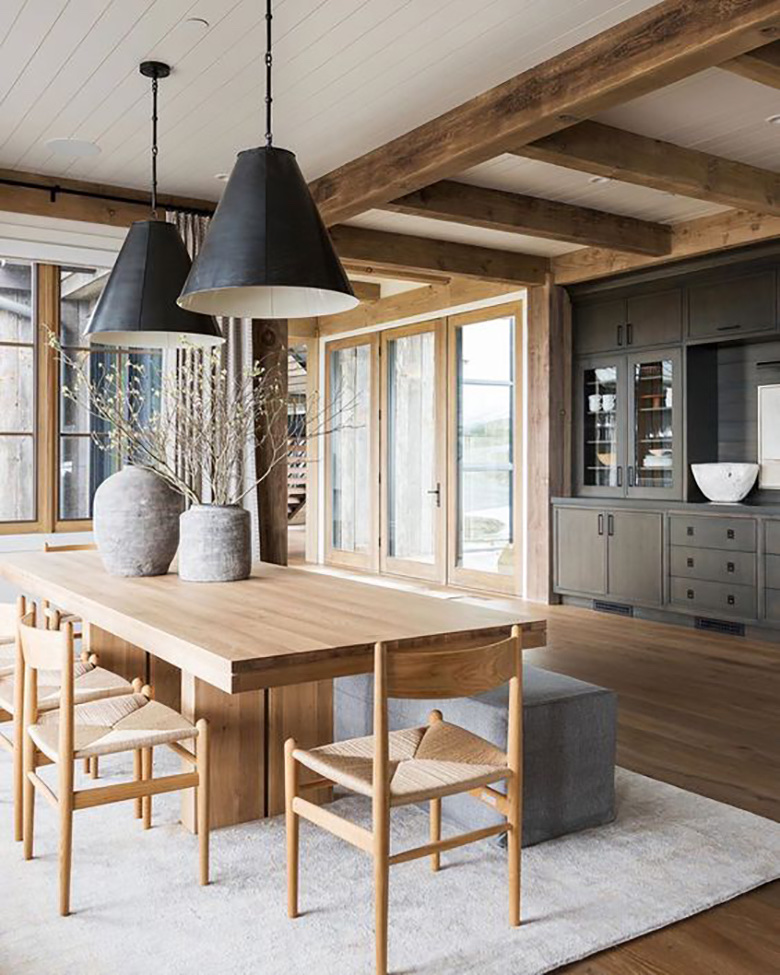

Below is a quick cheat sheet on the undertones of wood! I hope this blog has helped you feel more confident choosing various wood elements for your space!
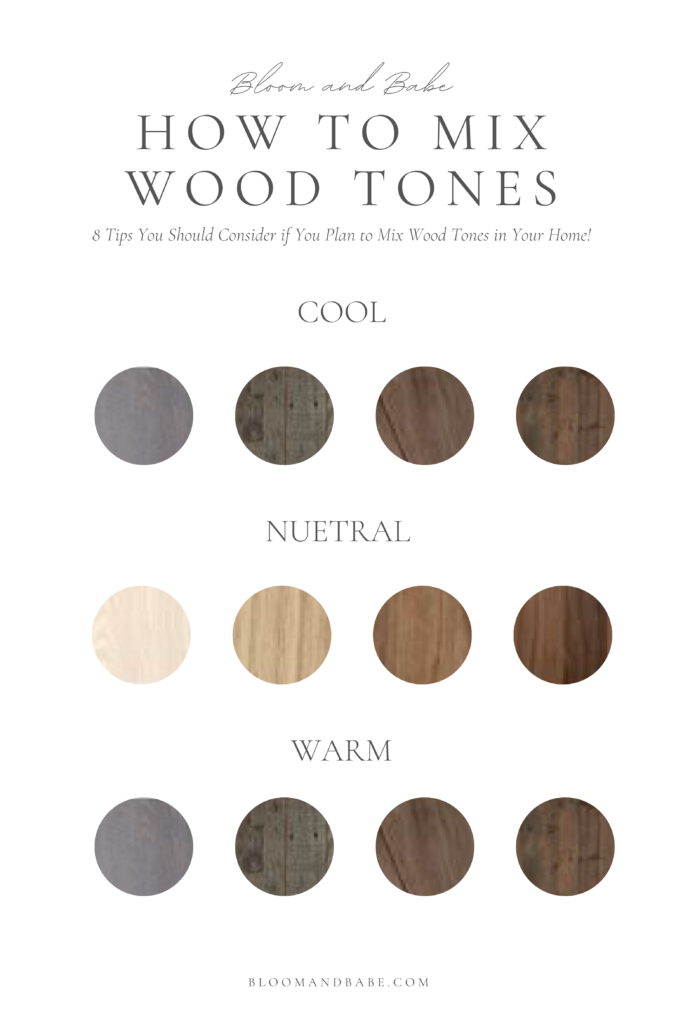
For more home design and decor information, check out my other blogs below! I love sharing and discussing my favorite home design topics with my followers. I’ve also made tons of mistakes along my home design journey so these posts are meant to help you avoid them!
10 Tips for Creating a Designer-Looking Kitchen
8 Must-Have Laundry Room Additions!
Easy Cabinet Hardware Placement Guide

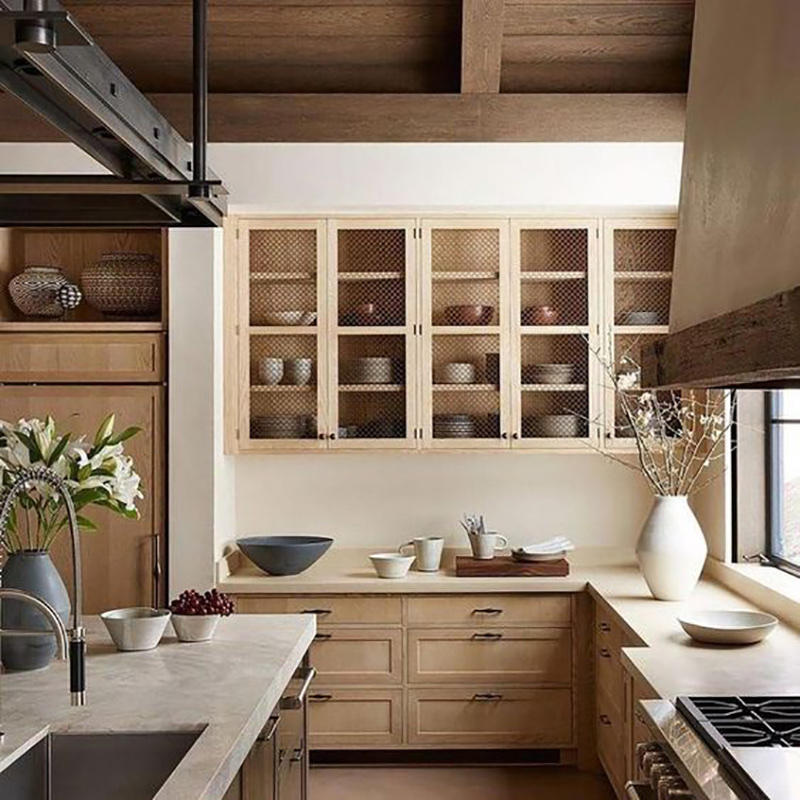




[…] How to Mix Wood Tones in your Home! […]